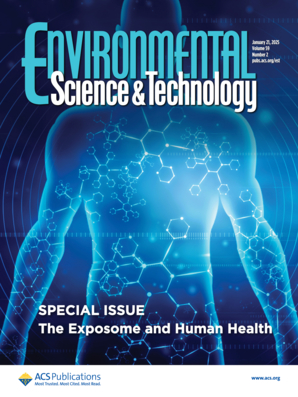Please find all scientific publications of IGB under > scientific publications
For more detailed information please refer to our > library catalogue
281 - 290 of 747 items

October 2024
Ecotoxicology and Environmental Safety. - 286(2024), Art. 117149
Cigarette butts enable toxigenic cyanobacteria growth by inhibiting their lethal fungal infections
Nele Guttmann; Justyna Wolinska; Stephanie Spahr; Erika Berenice Martínez-Ruiz
Many freshwater ecosystems contain significant amounts of nicotine and other chemicals from cigarette butts that are toxic to aquatic life. This study shows that some organisms may benefit indirectly: toxic cyanobacteria. This is because cigarette butts in the water harm their parasites by inhibiting infection by chytrid fungi. This promotes the growth of the cyanobacteria.
October 2024
Water Resources Research. - 60(2024)10, e2024WR037495
Ecological Connectivity of River‐Lake Ecosystem: Evidence From Fish Population Dynamics in a Connecting Channel
Jiajian Qiu, Saiyu Yuan, Hongwu Tang, Qi Zhang, Christian Wolter, and Vladimir Nikora
October 2024
Proceedings of the National Academy of Sciences of the United States of America. - 121(2024)42, Art. e2401215121
Shedding light with harmonic radar: Unveiling the hidden impacts of streetlights on moth flight behavior
Jacqueline Degen; Mona Storms; Chengfa Benjamin Lee; Andreas Jechow; Anna Lisa Stöckl; Franz Hölker; Aryan Jakhar; Thomas Walter; Stefan Walter; Oliver Mitesser; Thomas Hovestadt; Tobias Degen

October 2024
Science of the Total Environment. - 954(2024), Art. 176394
Ecosystem links: Anthropogenic activities, environmental variables, and macrophytes structure snail preferences in man-made waterbodies
Aspire Mudavanhu; Emilie Goossens; Ruben Schols; Tawanda Manyangadze; Tamuka Nhiwatiwa; Pieter Lemmens; Tine Huyse; Luc Brendonck
October 2024
Molecular Ecology Resources. - 25(2024)1, Art. e14023
Upscaling biodiversity monitoring: Metabarcoding estimates 31,846 insect species from Malaise traps across Germany
Dominik Buchner; James S. Sinclair; Manfred Ayasse; Arne J. Beermann; Jörn Buse; Frank Dziock; Julian Enss; Mark Frenze; Thomas Hörren; Yuanheng Li; Michael T. Monaghan; Carsten Morkel; Jörg Müller; Steffen U. Pauls; Ronny Richter; Tobias Scharnweber; Martin Sorg; Stefan Stoll; Sönke Twietmeyer; Wolfgang W. Weisser; Benedikt Wiggering; Martin Wilmking; Gerhard Zotz; Mark O. Gessner; Peter Haase; Florian Leese

October 2024
Environmental Science & Technology. - 58(2024)44, 19690–19701
Strong Subseasonal Variability of Oxic Methane Production Challenges Methane Budgeting in Freshwater Lakes
Liu Liu; Xin Zhang; Sina Schorn; Tomy Doda; Manchun Kang; Damien Bouffard; Georgiy Kirillin; Jana Milucka; Xiaotao Shi; Hans-Peter Grossart
October 2024
Limnology and Oceanography. - 69(2024)11, 2624-2638
Strong large-scale structure–function coupling in benthic bacteria is mediated by algae in a geodiverse river network
Lukas Thuile Bistarelli; Thomas Fuß; Franziska Walther; Luca Zoccarato; Lauren Talluto; Anna M. Romaní; Hans-Peter Grossart; Gabriel A. Singer
October 2024
Scientific Reports. - 14(2024), Art. 25821
Chytrid fungi infecting Arctic microphytobenthic communities under varying salinity conditions
Doris Ilicic; Jason Woodhouse; Ulf Karsten; Katherina Schimani; Jonas Zimmermann; Hans-Peter Grossart
September 2024
Functional Ecology. - 38(2024)10, 2123-2138
Evidence for a by-product mutualism in a group hunter depends on prey movement state
K. Pacher; J. Krause; P. Bartashevich; P. Romanczuk; P. Bideau; D. Pham; A. L. Burns; D. Deffner; F. Dhellemmes; B. Binder; K. M. Boswell; F. Galván-Magaña; P. Domenici; M. J. Hansen
Researchers from the Cluster of Excellence Science of Intelligence (SCIoI), in which the Humboldt-Universität zu Berlin (HU Berlin) and the Leibniz Institute of Freshwater Ecology and Inland Fisheries (IGB) are involved, have proven in an underwater field study in the ocean off Mexico: the faster a school of prey moves, the higher the capture rate of the striped marlin.
September 2024
Science of the Total Environment. - 926(2024), Art. 171962
Seasonality, rather than estuarine gradient or particle suspension/sinking dynamics, determines estuarine carbon distributions
Sven P. Tobias-Hünefeldt; Justus E.E. van Beusekom; Vanessa Russnak; Kirstin Dähnke; Wolfgang R. Streit; Hans-Peter Grossart








